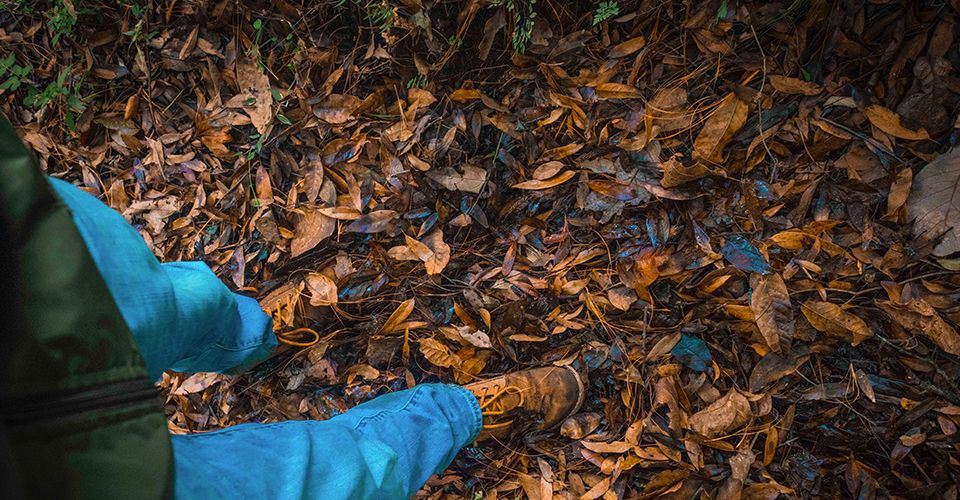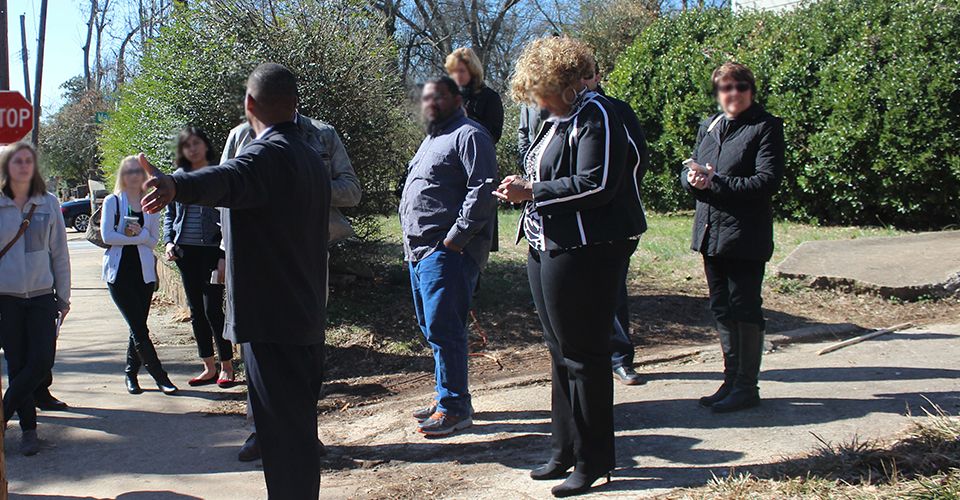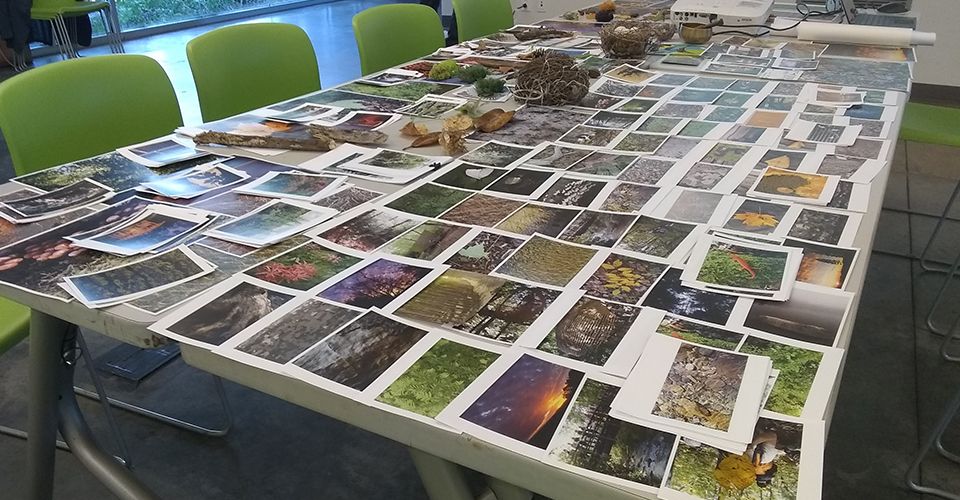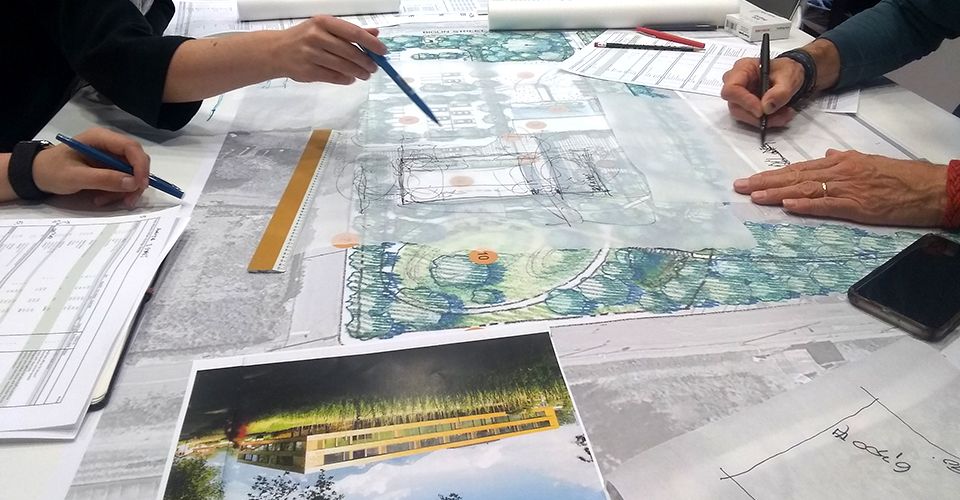Our world is rapidly changing. We are seeing growing cultural unrest, increased stress, and heightened anxiety seemingly at every turn. In a COVID-19 world, this increased stress feels more present than ever.
As we consider options to return to public spaces, it is paramount for us to incorporate health and wellbeing as ultimate drivers. The obvious focus in this instance is on minimizing contact and supporting respiratory health. It is also paramount that we support each other by utilizing interventions that foster our emotional wellbeing.

Exploration of natural environments helps to reconnect us with the essence of biophilia.
The essential need for biophilia
With the incorporation of seperating strategies such as social distancing, it becomes more essential than ever to foster a sense of security and support people’s holistic wellbeing—regardless of project scope.
One research-rooted approach supporting these needs resides within the field of biophilic design. As we are all experiencing an immense state of flux, it is paramount that we integrate the benefits of our natural environments into our built ones.
As Sonja Bochart, an interior designer, leading Biophilic Design Consultant at Lens Strategy, and Principal at Shepley Bulfinch asserts:
“This is a critical time and opportunity to consider even the simplest gestures and the power of nature to induce as sense of calm for people within our buildings. In recent months, many have reconnected to nature—in our gardens, streetscapes and homes. We have reconnected with our own love of life. If we bring people back to environments that are not that—to ones that lack comfort, security and a focus on wellbeing—then we are missing out on a powerful opportunity to support the best in our clients, when they need it most.”
It’s essential that we begin the conversation of incorporating biophilia into our project process.

Virtual workshops, co-design or investigative sessions provide flexibility while fostering safe diverse team engagement.
Using diversity and an integrated framework
We know that integrating biophilia within our spaces not only positively impacts wellbeing and productivity, but it also has compounding benefits on an organization’s financial health. How can we successfully embed biophilia throughout our projects?
For starters, a collaborative, inclusive and integrative approach is essential for overall success.
Sonja Bochart shares:
“This process is most powerful when it involves diverse stakeholders from all areas of the project, ranging from the owner to the design team to the end-user and community members. When done most successfully, the collaborative approach begins early in the project visioning and continues throughout the entire project.”
For example, a biophilic design framework embedded into the existing project process from programming to post-occupancy can include:
- Conversations with diverse members throughout a project seeking to identify the essence of the sense of place
- Engagement with the diverse members of community surrounding the project site
- Virtual or on-site biophilic design co-creative workshop(s)
- Inquisitive engagement with the project site to understand and honor its cultural and historical significance
- Collaborative design sessions integrating biophilic design involving diverse team and community members
- Engagement approaches such as surveys inviting broader stakeholder insights throughout the process
- Transparent and open communication of how the key insights gleaned from engagement strategies were drivers for the design solution throughout the project
The specific framework may vary to support the unique needs of the project and client. One thing remains consistent: When most successfully embedded, biophilic design moves far beyond the application of vegetation and natural materials and instead seeks to capture the essence and spirit of the project’s people and place.

Engage a range of members throughout all stages of the process for best success.
Adjusting the process to meet diverse project needs
A benefit of this inclusive approach is that it adjusts to varying project scopes and scales to directly align with the project’s needs. For example, new construction projects may accommodate more time for workshop development in the programming phase.
For a rapid refresh modification project—such as those accommodating COVID-related needs—the best support may lay in thoughtful expert-led conversations. These discussions would focus on uncovering unifying drivers to incorporating biophilia and understanding its benefits throughout the project.
Regardless of approach, reaffirming intention, diversity and inclusion throughout the process is a must.

Example of a strategic in-person biophilic design charrette (where visiting the project site was not an option at the time).
Approach considerations
The most supportive strategies call for including a person to lead, co-create, and educate the team on the successful integration of biophilia at all stages of the project. Cross-disciplinary conversations seeking to capture the essence of the spirit of place remains another essential constant in the process .
- Consider project, cultural and stakeholder specific questions; have these be open-ended to invite participation from a diverse range of voices.
- Questions such as “What is special about the history of this site and its people?” or “What is the essence of the sense of place to your organization and its culture?” could provide profound doors to uncovering the guiding principles and patterns that support a project’s overall success.
We all process ideas differently. Therefore, it is helpful to provide time for reflection after group engagements and create a way for people to share insights reached beyond the initial conversation.
Consider tools such as digital surveys to capture deep reflective information and integrate synthesized findings as guides into your project drivers.

Example of a co-creative design charrette integrating biophilic design strategies.
An ongoing process of integration
We are all constantly growing and evolving as individuals, community members, designers, and professionals. Let’s begin the conversation. Even incorporating questions throughout the process that seek to understand the essence and spirit of the project’s place can provide a powerful start.
While our ever-changing world can produce much uncertainty, one thing remains the same: Our buildings have a direct impact on our psychological, biological, and sociological wellbeing.
We must start the conversation around biophilia and continue it throughout our projects. We know the successful integration of biophilia goes far beyond checklists and greenery. Undertaking an inclusive holistic approach helps ensure we are supporting the incredible people who spend time in the spaces we’re honored to create with them every day.
Featured image © 2018 Eric Laignel
2 responses to “Wellbeing in “The New Normal” Through Biophilic Design”
Does your carpets actually absorb CO2 from the environment in which it is used?
Does your carpet absorb CO2 from the environment in which it is installed?